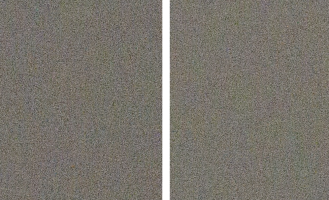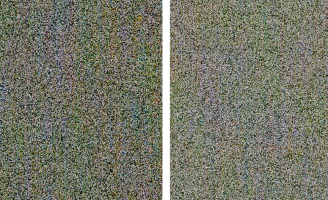Have you shot exact same scene in the same conditions, with the same exposure settings, only one time with ISO 1600 ES, and another time - ISO 6400 EFCS?
Higher...
1600 is totally fine.
It's not up until 6400~8000 ISO, with electronic shutter, that I notice the difference — in post-production, that is (I can't obviously see anything in-camera).
Not on tripod, but I've shot similar compositions, with equivalent exposure settings (constant ambient lighting), during the same concert.
It's not like the camera suddenly becomes terrible, this is a beast of a camera, but specially when recovering shadows I get very quickly to high ISO banding in these situations. If I change to EFC or mechanical shutter, I can go further. Shooting at 8000 ISO with EFC or MS allows me about the same editing flexibility as 3200 ISO with ES, or 16k EFCS vs 6400 ES. It's a very decent performance boost.
I found this I think last year, when shooting a few underground concerts at a extremely dark venue. Very poor, constant lighting, like 8~16k ISO, 1/250 to 1/500s, f/1.4, still underexposed (I still had my two Sigma Art lenses), flash not allowed. ES was not required, but I usually had my camera set to use it. Then, on one of those gigs, there was this lead singer who moved very quickly, and a few pictures of him seemed to have rolling shutter, so I decided to change to MS or EFCS. Later, when I was editing those pictures, I noticed from the moment I changed the shutter mode, the overall quality of the files improved nicely.
I shot a few more concerts at that location, decided to go with MS or EFCS, and again, the files were better than those shot with ES.
Since then, whenever I'm shooting at dark locations and don't forget to do so, I change to EFCS. There have been several times where I only remembered after shooting for a certain period of time, but was able to perceive the difference in post-production. It has been consistent.
Yes you do; and not for me but for yourself, if you want to get valid results from your tests.
I'm not even testing this lol. If a new camera comes, I may try to get my hands on it without purchasing, take it to the field and compare the results later...or maybe not. I'm not too concerned, I found a limitation and dealt with it, the camera did and still does the jobs required.
I would like to move to a camera with 14 bit RAW on ES, as well as x-sync with ES, and being able to shoot sports with ES wouldn't hurt, even though I rarely do so. High frequency anti-flicker would be nice to have too.
The R3 has all the specs I would desire, but its price tag is way out of my range, and I prefer a camera without a vertical grip, so I'm looking forward to a R6 with a stacked sensor. I've been wishing for such a camera for years.


